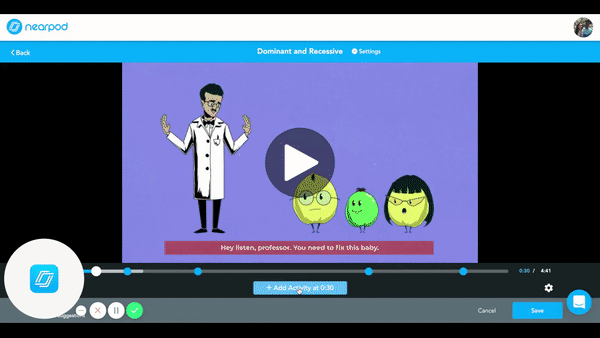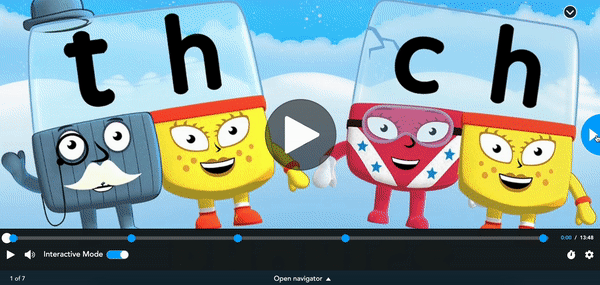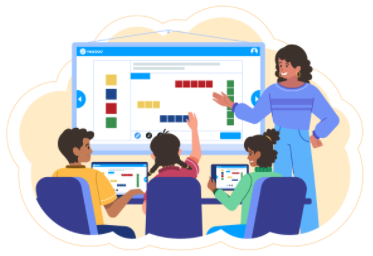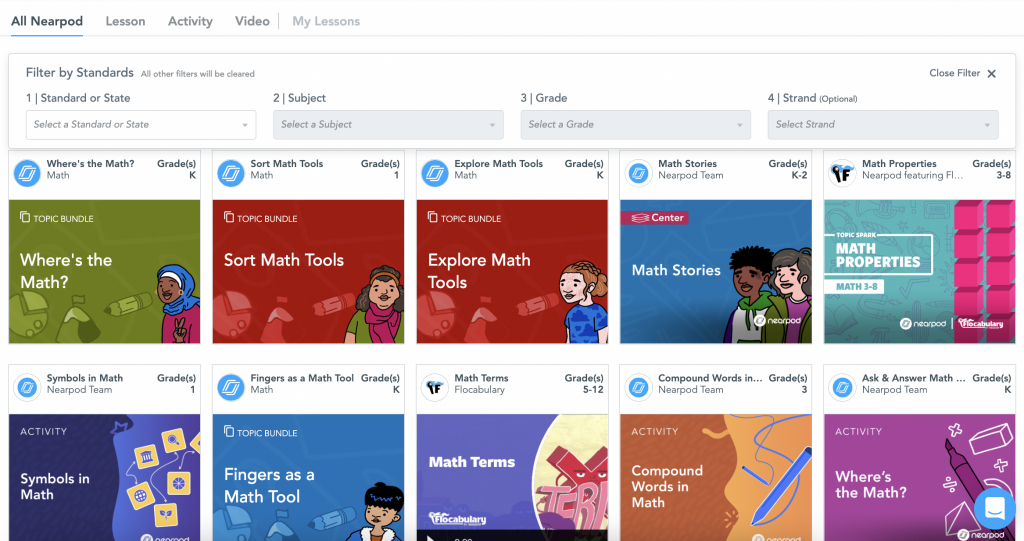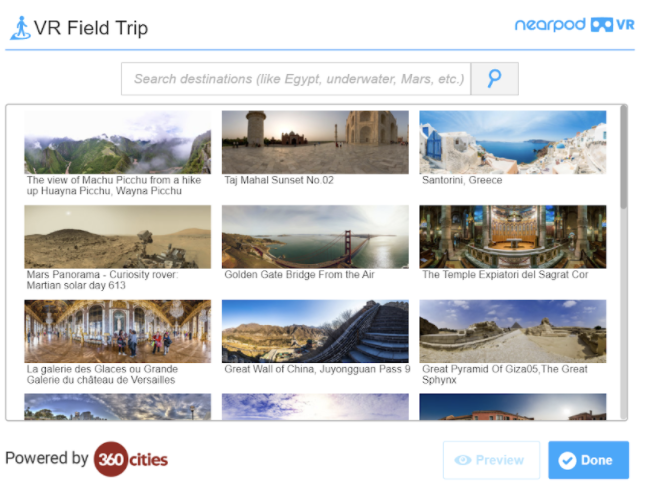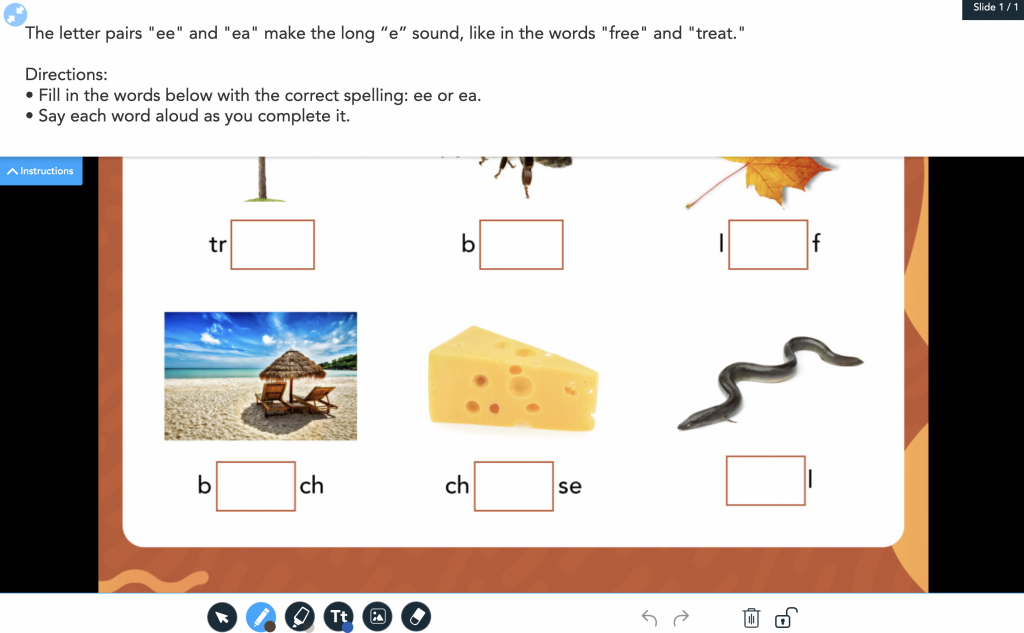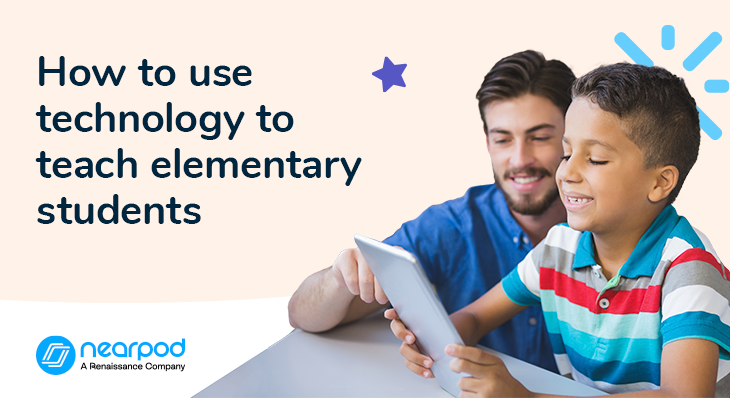
How to use technology in the elementary classroom
Get young learners off to a great start with technology in the early elementary classroom. Primary students are not only eager to use technology but also surprisingly capable. And students are more tech-savvy now than ever before—they use technology every day outside the classroom, through parents’ phones, gaming systems, and their own personal devices. Integrating technology in the classroom is essential for creating an engaging and dynamic learning environment, especially in an elementary school classroom. Throughout the school year, teachers can incorporate technology activities for elementary students into their lesson plans to enhance problem-solving skills and encourage collaborative learning. Early education classrooms are filled with young minds that are ready, willing, and able to learn, which makes Nearpod a valuable resource for expanding students’ learning to new, magnetic media experiences.
Nearpod gives you real-time insights into student understanding through interactive lessons, videos, gamification, and activities. Students can easily join from their devices to participate in the lessons, and you can teach them how to use Nearpod through a few simple steps. With Nearpod for elementary educators, you can access standards-aligned premade lessons, activities, and videos, and create your own. To access the activities and lessons mentioned here, sign up for free below to get started!
New to Nearpod? Teachers can sign up for free below to access the resources in this post and create their own interactive lessons. Administrators can schedule a call with an expert to unlock the full power of Nearpod for schools and districts.
Why is it important to use technology in elementary schools?
Kids can surprise you. I think that’s why I’m still at the edge of my seat even after nine years of teaching first grade. This infographic published by Everyday Family shows that 57% of kids under 12 have used a mobile device for educational purposes. Oddly enough, there seems to be a misconception that technology isn’t suitable for early education classrooms, and it’s been my personal experience that this is incorrect. There are many benefits to using technology in the classroom. Teaching elementary students with technology provides them opportunities to learn at their own pace, increases their engagement and participation, helps build their skills in operating devices and software, creates fun learning moments, and prepares them for future careers.
How to use technology in the elementary classroom
1. Interactive activities
With one simple click, young students connect to learning in ways that far surpass paper, pencils, and cutting and gluing. You can still create hands-on and interactive learning experiences for your students with technology. Have them use digital drawing whiteboards, drag and drop activities, virtual reality experiences, and more.
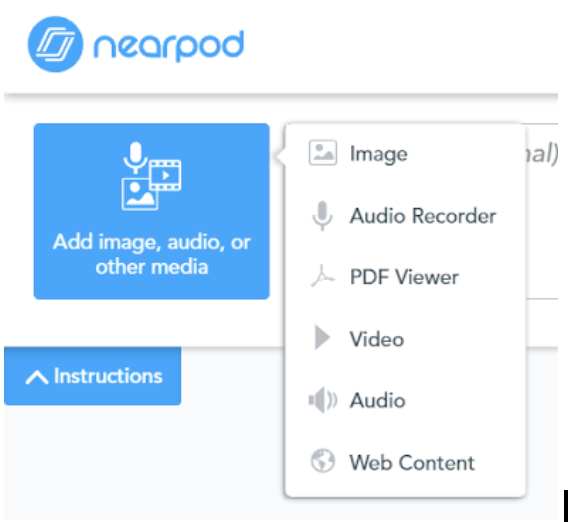
Nearpod’s activities are perfectly suited for primary students. Activities like Draw It and Drag and Drop enable students to show what they know—even students who have yet to master basic typing skills.
To help students who are just learning to read and write, Nearpod offers assistive tools such as:
- Student-Paced Mode
- Audio Responses
- Text-to-Speech in Immersive Reader
- Various multimedia instructions
2. Videos and activities for reading
Video’s growing role in the classroom makes it the newest genre alongside fiction and informative texts. More than that, young learners respond to interesting, interactive videos. My students retain more reading concepts when I teach through Nearpod than when I use big books and anchor charts alone. My school’s reading program tasked me with teaching the concept of characters to my students. I showed them the “Story Elements for Kids: What Is a Character?” interactive video, and whole-group teaching on the carpet evolved beyond pointing to a poster and reading a big book. I was able to expand my lesson by gauging student understanding during instruction through questions embedded in the video. There are many more reading videos to choose from in Nearpod’s Lesson Library which you can search through by lesson keywords, and filter by subject, standards, and grade level to find content that’s right for your classroom.
Test out some of these Nearpod activities on the carpet and see how your little learners leap up to participate in reading instruction:
- Time to Climb
- Matching Pairs
- Memory Test
- Fill-in-the-blanks
3. Teaching phonics
Primary teachers, raise your hands if every student in your classroom needs the same phonics skill. If someone raised their hand, it was probably to go to the bathroom. This happens to me all the time when I’m teaching! What I’ve come to learn by teaching first grade is that phonics is subjective. In early education classrooms, phonics is instrumental to reading, spelling, and breathing. (Maybe not that last one, but close.) Many students need different phonics skills, and that means we must meet all students on their level. Nearpod saves time and energy for differentiated phonics activities. I love using Drag and Drop to make word sorts. I also tie Nearpod videos to the lesson to help reinforce spelling patterns. My kids adore Alphablocks! Check out the lesson I created on Nearpod using Alphablocks. This gives me station activities while I read with my students. I give each group a code to complete their activities, and I check student progress through reports.
Here is just a short list of activities you can create in Nearpod to amp up your phonics lessons. With these tools at your disposal, the phonics possibilities are endless.
- Use the Matching Pairs feature for letter-sound correspondence with pictures and words.
- Use Drag and Drop to create word sorts for different spelling patterns.
- Use Draw It to have students label words and identify syllable types (helps with identifying consonant letters vs. vowels).
- Use the Collaborate Board to have students practice spelling words that follow sound patterns.
4. Using multimedia in math
A great math supplement is a thing of beauty. No curriculum is perfect enough to give teachers everything that they need when they need it. That’s just the hard reality we face. However, Nearpod’s library of math videos, lessons, and activities helps guide my math instruction in the right direction. There are so many math concepts to choose from that are all aligned with standards, so I don’t question the content I assign my students. Nearpod even offers teachers and students high-quality videos created with partners such as:
- Flocabulary
- Sesame Street (shout out to Cookie Monster!)
- Numberblocks
- LearnZillion
- Khan Academy
- Nearpod’s original content
Browse Nearpod’s Lesson Library for math concepts you are teaching for that day. It saves you time and prep work while still ensuring that students learn math skills just right for them. All you need to do is filter by grade and subject in the Nearpod library. Premade lessons are at your fingertips and already aligned with standards.
5. Virtual reality for science and social studies
I live in the middle of nowhere! It’s true. Being in a small town is nice for the most part, but we don’t have access to many resources for science and social studies, and I want to broaden my student’s horizons when teaching these subjects. Younger students are curious about the world around them. Nearpod’s Virtual Reality (VR) Field Trips help add relativity to both social studies and science.
VR experiences help my early education students explore cultures and people who are vastly different from them. Nearpod includes social studies lessons that prepare my students for the beauty of how large and diverse the world truly is. The content is rich in cultural diversity and inclusivity. I love all things spooky, and to celebrate my mom’s Mexican heritage, I found a wonderful Dia De Los Muertos lesson to share with my students. I loved it, and so did they.
6. Writing instruction through technology
The landscape of writing has morphed into something wholly original. I am an early education teacher who believes in mixing old and new. Yes, I still use primarily paper, pencil, and journals, but I also give my first-graders opportunities to write through technology. Creating lessons through Nearpod allows writing to be more interactive and hands-on while instructing young writers along the way. It’s a challenge to guide students who hate writing; my students love expressing their writing through technology. The many accessibility features in Nearpod, such as Immersive Reader and audio recording, help emerging writers more than ever before. Students can record their ideas, jot them down as images with the Draw It activity, or practice their typing skills. This helps those young writers who cannot hold onto an idea long enough to write it down on paper. Pictures and videos spark writing ideas more than simply giving a writing prompt. There are many grammar and writing videos and lessons for primary grades in Nearpod to make writing more hands-on and interactive.
Technology also aids students who struggle with handwriting. Often, you may find that even students at early ages don’t like writing on paper with pencils, but their ideas flow more naturally through a keyboard. Don’t we as teachers need to provide all learners the ability to access their potential? Younger students need more exposure to expressing ideas through a keyboard. This helps teachers achieve technology standards in fun, innovative ways. By thoughtfully incorporating technology activities for kids, teachers can ensure that their elementary students develop the skills needed for success in the digital age.
Get started using elementary classroom technology with Nearpod
Young learners are curious and inquisitive. With educational technology, such as interactive apps and digital tools, students can work together on technology projects for kids that make learning fun and effective. Through practice and patience, early education students are well suited to use technology within the classroom. The first step is to place the technology into their tiny hands—and Nearpod will help you take those first steps with confidence. I’m sure your little learners will take to technology like a duck to water!
New to Nearpod? Teachers can sign up for free below to access the resources in this post and create their own interactive lessons. Administrators can schedule a call with an expert to unlock the full power of Nearpod for schools and districts.

Angelia Simpson has been a first grade teacher for nine years. With a classroom full of minions, she balances the wonderful line of chaos and learning. Passions include writing, technology, reading, and Corgis.
